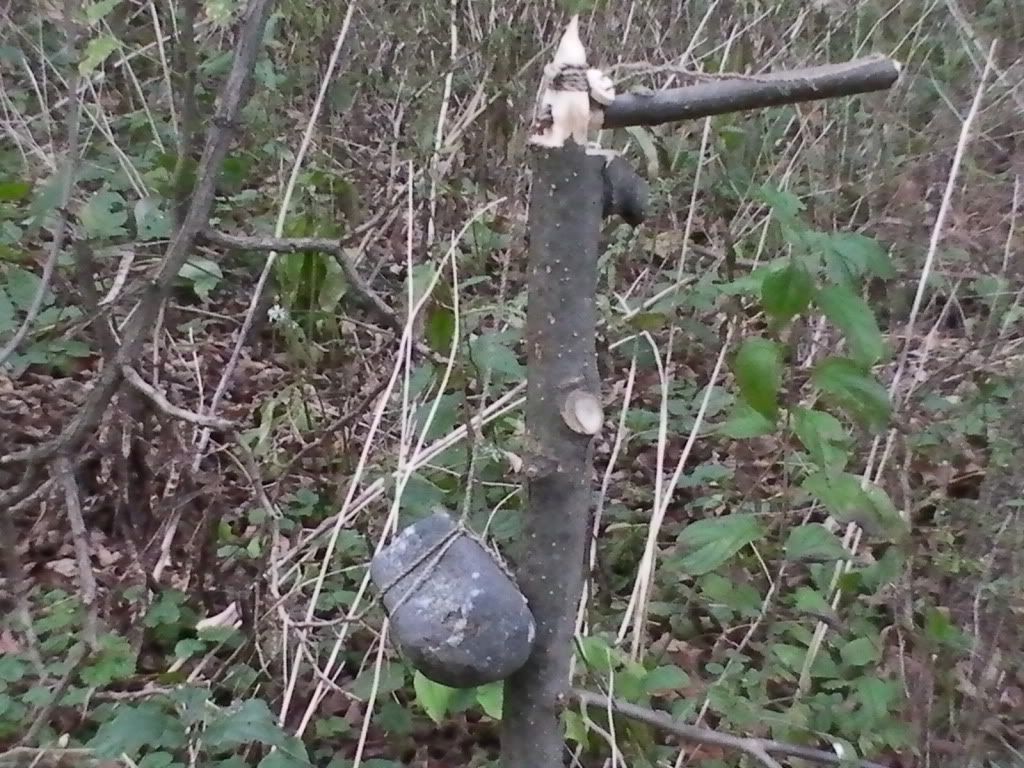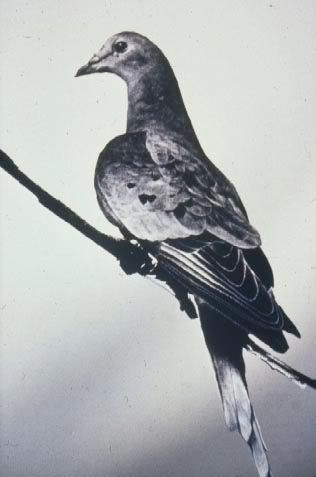Spearfishing for the most part is highly illegal in present-day Ontario, except for one exception; if you are a First Nation with hunting and fishing rights within the province, or within a certain part of Ontario. My community -the Mississaugas of Rice Lake, also known as Hiawatha First Nation- had no hunting rights for the past century or so. I'm not going to make this into a political discussion, so suffice it to say, back in December that was finally resolved and my community was granted hunting and fishing rights back into our traditional territory. This might explain one of the many reasons that I have not had the chance to post as frequently as I did a year ago. Been hunting, fishing, trapping and gathering as much as I can!
So tonight, my cousin came over and explained that we were idiots for not focusing on spearfishing this past spring. We missed the pickerel run, mostly due to my school schedule, but also to the severe weather we've had in Ontario this spring.. literally 4 ft high waves on Rice Lake during a large portion of the pickerel spawning run (which makes for really crappy spearfishing. We had talked a lot about it over the past month, and finally decided tonight to just go out and try the new spears we made back in March. Josh (the cousin) couldn't find his, so we ended up with just mine.
My spear is made from a young white pine sapling that is approximately 8ft long, two steel prongs, and lashed together with codline (I believe this is often called Bankline south of the 49th). The prongs were made by me with a miniature forge of firebricks and a gas-torch. I used standard steel rods that were 3/16ths of an inch thick. I bought the rods from Home Depot. The ends were bent at a 90-degree angle while under heat, and then the rods were annealed. Once annealed, I cut very small barbs into the rods, and tape the tips to a fairly fine point. These I plan to make larger later when I get the new forge built next Friday. After that is all done, its' time to harden and then temper the prongs. This is where it gets interesting, as the tips of the prongs must be hard enough to hold a sharp tip, yet soft enough that when you strike a rock (not IF you strike a rock, but WHEN you strike a rock) you don't snap the tips of your prongs. Basically what I like to do is keep the entire prong fairly soft in temper, except for the very tip (which I keep about the same hardness as a knife). So first I bring them up to temperature where the steel is no longer magnetic. Once that is done, I quenched them in old motor oil. Then I scrape the steel clean with wire brushes, so that I can watch the tempering procedure. Using a gas-torch, I dance the flame back and forth, aiming for a light blue tone on the majority of the prong. However, I only aim for a light brassy tone on the last 1/2 inch of prong, towards the tip.
Once the prongs are tempered, I drill a small hole into the spearshaft (at the thick end) about 3-4 inches in from the end. This hole is about 3/16" in diameter, and fits the bent ends of the prongs snugly. I add a slight channel from the hole to the end of the spearshaft, to help hold the prongs snugly. Once this is done, I shape the end to be a bit more aqua-dynamic, and then fit the prongs in. Afterwards, I lashed codline tightly around the prongs. This technique is what I learned from an old Chippewa Ojibway from Saugeen First Nation (over on Lake Huron). The spear end looks like this;
Alright, so onto the fun part...
We get into my Kawartha canoe, whose nickname is aptly "Tippy". We have no proper lighting, so we use two flashlights. With only one spear, and obviously wanting to control the canoe, I had Josh sit in the bow, while I paddled us at a snail's crawl. Two tips for anyone wanting to try boat-based spearfishing; get good lighting and a real stable canoe. We'll be building an English-style punt this summer out of pine and cedar boards, both for duck season, and for the fall pickerel run. Josh was hoping for pickerel, but I knew we were unlikely to find any. We ended up scouting the water out for at least 45 minutes. After a while of checking along the cattail edge and finding nothing, we turned back and went westerly along the north shore of Rice Lake, heading for the rock and stumps of the shallows.
This was where we found luck. After missing twenty or more Large-mouthed bass, Josh had one close by. WHACK! And that was when the struggle began. Believe me on this, if you think a fish can put up a fight on a hook and line, you have not seen a 5lb bass get hit by an Ojibway with a spear! He held her to the bottom until she stopped struggling for the most part. Every muscle in his upper body was straining -to keep the fish on the spear AND to keep his butt in the canoe! Finally he flipped her in.
Next lesson; kill any fish you spear immediately. We decided to not "bother" with that, though something told us both that we should. That was when we saw an 8lb mother of all bass cruise right for the spear tip... and that was when the bass Josh caught decided to spasm and slam into the hull of the canoe repeatedly. The 8er was gone in a flash, and it took us another 30 minutes to see any fish. This is why we decapitated the one Josh caught. No more splashing attempts.. We were turning back to head home (it was well past 1am at this point, and we started around 11pm), when Josh saw one that was less than a pound. "Don't bother Cousin, I don't think you can get one that small with that spea-WHACK!" Annnd that was when Josh learned that even a tiny fish on a spear can put up a helluva fight. Once he flipped her into the boat, I severed the spine immediately, so that we'd have no repeats. Josh got close to another half a dozen, but they always eluded his shots. I tried a few times, but gave up, as its' difficult to aim from the back of the canoe! When it hit 2am, we knew it was time to pack it in. The night air was just above freezing tonight, even though the water was warm. I was soaked, and my butt was asleep. Josh's ankles were burning from crouching to balance the canoe with every shot he took.
So here are our results!
Not too bad!
We'll be building a better boat, and setting up a proper lighting system on it. As well, we'll be making some Australian-style fishing spears, with paralyzer-style prongs. I'll also be setting up my bow with a reel in a few days, as the carp are everywhere!
Anyways, I'm tired, and we've got at least one successful night of spearfishing in this spring. Glad to be back on the forums, hope y'all enjoy the read!


